#GroceryDataExtraction
Explore tagged Tumblr posts
Text

Grocery Delivery Data Scraping - Extract Supermarket and Store Data Real Data API’s grocery delivery data scraping service is vital for businesses looking to extract grocery store and supermarket data efficiently. By utilizing advanced scraping techniques, we help you gather valuable insights from various sources, including prices, product availability, and promotions. In the USA, UK, UAE, Germany, Australia, and Spain, grocery data scraping empowers you to stay competitive with real-time information about market trends and consumer preferences.
#GroceryDeliveryDataScraping#WebScrapingGroceryData#GroceryDataScrapingAPI#GroceryDataExtraction#SupermarketDataExtraction#GroceryStoreDataAPI#GroceryAppDataScraping#OnlineGroceryPriceScraping#GroceryStoreDataCollection#SupermarketInventoryScraping#GroceryProductDataExtraction#GrocerySalesDataExtraction#GroceryPriceDataScraping#ScrapeGroceryDeliveryData#ExtractGroceryDeliveryData#WebScrapingAPI#WebScraping#DataScraping#RealDataAPI#DataExtraction#ExtractData#ScrapeData#DataCollection#UK#USA#UAE#Australia#Singapor#NewZealand#canada
1 note
·
View note
Text
Blinkit Grocery Data Scraping Services - Extract Blinkit Supermarket Data
Unlock comprehensive supermarket insights with our Blinkit Grocery Data Scraping services. Extract detailed product names, categories, prices, and availability from Blinkit in markets like the USA, UK, Japan, and more for data-driven decisions.
Knoe More >> https://www.actowizsolutions.com/blinkit-grocery-data-scraping-services.php

#BlinkitDataScraping#GroceryDataExtraction#SupermarketDataScraping#BlinkitSupermarketData#SupermarketInsights#RetailDataExtraction#BlinkitScraping#ProductDataScraping#GroceryDataSolutions#EcommerceDataScraping#BlinkitRetailData#DataDrivenDecisions#RetailMarketAnalysis#SupermarketDataAnalysis#RetailIntelligence#MarketInsights
0 notes
Text
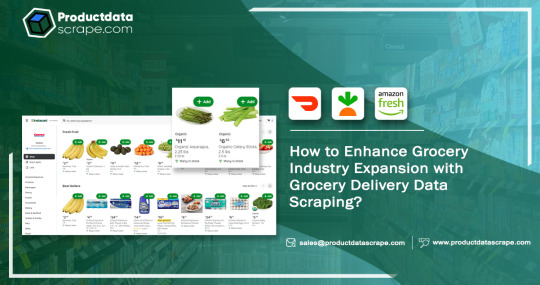
How to Enhance Grocery Industry Expansion with Grocery Delivery Data Scraping?
#GroceryDeliveryDataScraping#WebScrapingGroceryData#GroceryDataScraper#GroceryDataExtraction#ScrapeGroceryDeliveryData
0 notes
Text

Grocery Delivery Data Scraping - Extract Supermarket and Store Data
Our Grocery delivery data scraping allows businesses in the USA, UK, UAE, and India to extract valuable information from grocery stores and supermarkets efficiently.
#GroceryDeliveryDataScraping#WebScrapingGroceryData#GroceryDataExtraction#SupermarketDataExtraction#GroceryStoreDataAPI#GroceryAppDataScraping#OnlineGroceryPriceScraping#GroceryStoreDataCollection#SupermarketInventoryScraping#GroceryProductDataExtraction#GrocerySalesDataExtraction#GroceryPriceDataScraping#ScrapeGroceryDeliveryData#ExtractGroceryDeliveryData#WebScrapingAPI#WebScraping#DataScraping#RealDataAPI#DataExtraction#ExtractData#ScrapeData#DataCollection#UK#USA#UAE#Australia#Singapor#NewZealand#canada#Malesiya
0 notes
Text

Extract Swiggy Instamart API for Grocery Data Collection
Learn how to scrape Swiggy Instamart API to collect valuable grocery data. Optimize your data collection with our comprehensive guide. Scraping Swiggy Instamart API data, businesses can access real-time information on grocery products, prices, and availability.
#InstamartDataScraping#SwiggyGroceryScraping#GroceryDataExtraction#InstamartAPIScraping#SwiggyInstamartScraper#InstamartPriceScraping#InstamartInventoryData#GroceryInventoryScraping#SwiggyGroceryDataExtraction#SwiggyGroceryAPI#InstamartPriceComparison#WebScraping#DataScraping#DataCollection#DataExtraction#RealDataAPI#usa#uk#uae#germany#australia#canada
0 notes
Text
Extract Swiggy Instamart API for Grocery Data Collection

Introduction
In the fast-evolving world of eCommerce, access to real-time grocery data is crucial for businesses aiming to stay competitive. One effective way to gather this data is by scraping the Swiggy Instamart API. This blog will provide a comprehensive guide on how to scrape Swiggy Instamart API for efficient grocery data collection, using the right tools and methodologies.
What is Swiggy Instamart API?
The Swiggy Instamart API is an interface provided by Swiggy, a leading food delivery platform, for accessing grocery-related data from its Instamart service. It allows developers and businesses to retrieve information about products available on Instamart, including product names, prices, descriptions, and availability. The API facilitates seamless integration with other systems, enabling users to collect and analyze real-time data for market insights, pricing optimization, and inventory management. By leveraging the Swiggy Instamart API, businesses can enhance their understanding of grocery trends and make data-driven decisions to improve their operations.
Why Scrape Swiggy Instamart API?
Scraping the Swiggy Instamart API offers significant advantages for businesses and data analysts looking to gain insights into the grocery sector. Here’s why it’s a valuable strategy:
Market Insights: By scraping Swiggy Instamart API data, businesses can access real-time information on grocery products, prices, and availability. This data helps in understanding market trends, identifying popular products, and analyzing competitive pricing. Extracting Swiggy Instamart API data allows for a detailed view of market dynamics and consumer preferences.
Pricing Optimization: With the ability to regularly extract Swiggy Instamart API data, businesses can monitor price changes and trends. This enables the optimization of pricing strategies to remain competitive. Scraping Swiggy Instamart API helps in adjusting prices based on real-time market data, ensuring that pricing remains aligned with current market conditions.
Inventory Management: Effective inventory management is crucial for avoiding stockouts and overstocking. By scraping Swiggy Instamart API, businesses can stay updated on product availability and stock levels. This information helps in making informed decisions about inventory restocking and management.
Competitive Analysis: Scraping Swiggy Instamart API provides insights into competitors’ product offerings and pricing. This information is essential for benchmarking and developing strategies to stay ahead of the competition. Extracting Swiggy Instamart API data gives a clear view of how competitors are positioning their products and pricing.
Enhanced Customer Experience: Access to accurate and up-to-date product information allows businesses to offer better recommendations and personalized promotions to customers. By leveraging data from Swiggy Instamart API collection, companies can improve their customer engagement and satisfaction.
Scraping Swiggy Instamart API is a powerful method for extracting valuable grocery data, which supports pricing optimization, market analysis, competitive strategy, and inventory management. Using the Swiggy Instamart API effectively ensures that businesses are well-informed and can make data-driven decisions.
Tools and Technologies for Scraping Swiggy Instamart API
1. Python Libraries
Python is a popular language for web scraping due to its rich ecosystem of libraries. For scraping the Swiggy Instamart API, you can use libraries such as:
Requests: To send HTTP requests and retrieve data from the API.
BeautifulSoup: To parse and extract data from HTML content (if the API response is in HTML format).
JSON: To handle JSON data (most APIs, including Swiggy Instamart API, use JSON format).
2. API Clients
Using specialized API clients can simplify the process of interacting with the Swiggy Instamart API. Examples include Postman and Insomnia, which help in testing API endpoints and managing requests.
3. Automation Tools
For regular data collection, consider using automation tools such as:
Cron Jobs: To schedule and automate data scraping tasks.
Celery: A distributed task queue for handling background tasks in Python.
Step-by-Step Guide to Scrape Swiggy Instamart API
1. Understand the API Documentation
Before starting, review the Swiggy Instamart API documentation. This will help you understand the available endpoints, data structure, authentication requirements, and rate limits.
2. Set Up Your Environment
Ensure you have the necessary tools and libraries installed. For Python, you can install the required libraries using pip:pip install requests beautifulsoup4
3. Obtain API Access
To access the Swiggy Instamart API, you may need an API key or access token. Sign up for Swiggy’s developer program or contact their support to obtain the necessary credentials.
4. Make API Requests
5. Extract and Parse Data
6. Store Data
7. Handle Errors and Exceptions
8. Respect API Rate Limits
APIs often have rate limits to prevent abuse. Make sure to respect these limits to avoid being blocked. Implement rate limiting and retries in your scraping logic to handle this gracefully.
9. Automate Data Collection
For continuous data collection, automate your scraping process using scheduling tools like Cron Jobs or Celery. This ensures that you regularly update your data without manual intervention.
Legal and Ethical Considerations
1. Respect Terms of Service
Always review and adhere to the terms of service of the Swiggy Instamart API. Unauthorized or excessive scraping can lead to legal issues or access restrictions.
2. Handle Data Responsibly
Ensure that you handle the extracted data responsibly, especially if it includes sensitive or personal information. Follow best practices for data privacy and security.
3. Avoid Overloading the Server
Implement efficient scraping practices to avoid overloading Swiggy’s servers. Use rate limiting and optimize your queries to minimize server impact.
Conclusion
Scraping the Swiggy Instamart API for grocery data collection can provide valuable insights and enhance business operations. By following the steps outlined in this guide and using the right tools, you can effectively extract and utilize this data for pricing optimization, market analysis, and inventory management.
Remember to approach scraping ethically and legally, respecting API usage policies and handling data responsibly. Happy scraping!
Ready to get started? Use the Real Data API to streamline your grocery data collection today!
#InstamartDataScraping#SwiggyGroceryScraping#GroceryDataExtraction#InstamartAPIScraping#SwiggyInstamartScraper#InstamartPriceScraping#InstamartInventoryData#GroceryInventoryScraping#SwiggyGroceryDataExtraction#SwiggyGroceryAPI#InstamartPriceComparison#WebScraping#DataScraping#DataCollection#DataExtraction#RealDataAPI#usa#uk#uae#germany#australia#canada
0 notes
Text
Extract Swiggy Instamart API for Grocery Data Collection
scraping Swiggy Instamart API data, businesses can access real-time information on grocery products, prices, and availability. This data helps in understanding market trends, identifying popular products, and analyzing competitive pricing. Extracting Swiggy Instamart API data allows for a detailed view of market dynamics and consumer preferences.
#InstamartDataScraping#SwiggyGroceryScraping#GroceryDataExtraction#InstamartAPIScraping#SwiggyInstamartScraper#InstamartPriceScraping#InstamartInventoryData#GroceryInventoryScraping#SwiggyGroceryDataExtraction#SwiggyGroceryAPI#InstamartPriceComparison#WebScraping#DataScraping#DataCollection#DataExtraction#RealDataAPI#usa#uk#uae#germany#australia#canada
0 notes
Text
How to Enhance Grocery Industry Expansion with Grocery Delivery Data Scraping?
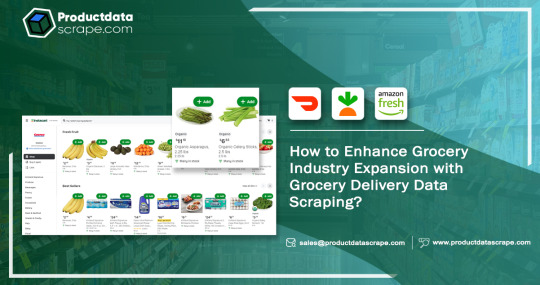
The rise of online grocery delivery platforms has transformed how people shop for groceries, eliminating the need for weekly visits to physical stores. This industry witnesses significant growth, with a projected annual revenue increase of 20% from 2021 to 2031. Popular websites and apps such as DoorDash, Amazon Fresh, and InstaCart have experienced a surge in orders.
Online grocery delivery services have thrived thanks to advancements in digital technology, robust logistics, and increasingly hectic personal and professional lives. For those looking to expand existing services or embark on a new venture, web scraping grocery data emerges as a powerful solution to help achieve their business objectives.
Online grocery shopping has become an essential user service in today's fast-paced world. Customers no longer need to visit physical stores to browse products, as their time is increasingly limited. The growing demand for convenience is propelling the online grocery market forward. By 2022, roughly 10% of all grocery sales will occur online, amounting to a staggering $133.8 billion in value.
List Of Data Fields
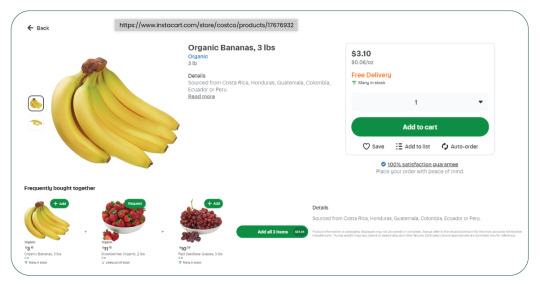
Product Full Name
Product SKU/Code
Image Product URL
Category of Product
Subcategories
Product Price
Discounted Price
Product Savings
Cost of Shipping
Description of Product
Specification of Product
Details Seller
Best Deals on Popular Products
Offer Best
Sellers Best
Offers Combo
Why Scrape Grocery Delivery Data?
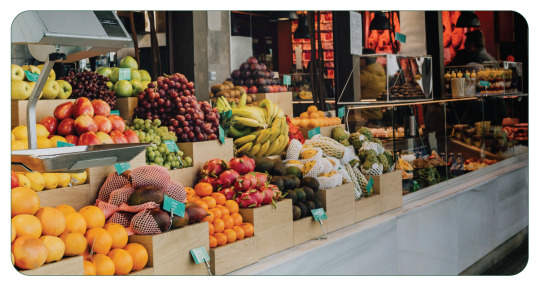
Scraping grocery delivery data offers numerous benefits for businesses and consumers:
Competitive Analysis: It allows businesses to gather competitors' data and analyze their pricing strategies, product offerings, and delivery services to gain a competitive edge.
Pricing Optimization: By scraping pricing data from various grocery delivery services, businesses can make informed pricing decisions to attract and retain customers.
Product Availability: Monitoring product availability and stock levels helps businesses meet customer demand and avoid stockouts.
Market Trends: Scrape grocery delivery data to provide insights into market trends, helping businesses adapt to changing consumer preferences and emerging product categories.
Customer Convenience: Consumers can use scraped data to compare grocery delivery options, find the best deals, and streamline their shopping experience, ultimately saving time and money.
How Can Grocery Data Scraping Help Enhance Business Success?
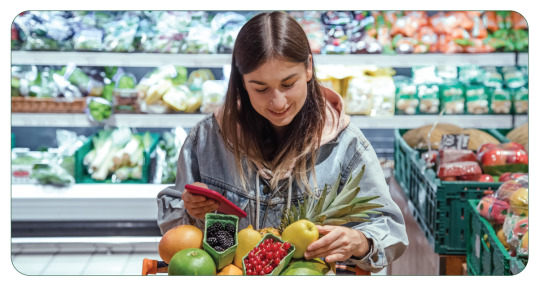
Grocery delivery data scraping is a potent catalyst for business success in the ever-evolving world of online grocery retail. Aggregating data from various sources equips businesses with the intelligence to make informed decisions that drive growth and competitiveness. It offers a competitive advantage by providing insights into pricing strategies, product assortments, and service offerings of rivals. Real-time pricing data enables businesses to optimize pricing strategies, attracting and retaining customers while ensuring profitability. Monitoring product availability and stock levels minimizes the risk of stockouts, ensuring a seamless customer experience. Insights into market trends and consumer preferences help businesses adapt staying ahead of changing demands. In addition, customer behavior analysis allows for tailored services, ultimately boosting customer satisfaction. Automating data collection using grocery data scraper saves time and resources, directing efforts toward strategic planning and operational efficiency. Whether expanding into new regions or diversifying product lines, grocery data scraping services empower businesses to make data-driven choices and enhance their prospects of success in the dynamic grocery sector. Web scraping grocery delivery data is a versatile tool with various applications, benefiting many stakeholders in the rapidly growing online grocery market. Whether you are an established grocery retailer, an online merchant, a bulk grocery dealer, a competitor in the grocery platform sector, or a business planning expansion, web scraping provides unique advantages:
Grocery Retailers: If you currently operate a brick-and-mortar grocery business, transitioning to an online model can provide customers with enhanced convenience. To ensure a successful transition, analyzing local competitors' offerings is crucial. Web scraping services can help you gain insights into local grocers' products, pricing, and strategies. This data can guide your marketing efforts and ensure a competitive edge when joining popular grocery delivery platforms.
Online Retailers: Incorporating groceries can boost sales and revenue for online retailers offering products across various categories. High-quality grocery items can attract a broader customer base, increasing sales in other product categories. Web scraping allows you to identify the most appealing grocery products and refine your offerings accordingly.
Bulk Grocery Dealers: If you are a bulk grocery dealer catering to retailers, web scraping can provide invaluable insights into customer preferences. Collecting data from product ratings and reviews can comprehensively understand popular product categories across different regions. This information helps you tailor your offerings to attract more retailers seeking bulk grocery supplies.
Grocery Platform Competitors: In an industry with regular new entrants, staying competitive is essential. Web scraping can significantly enhance your business strategy if you operate or plan to launch an online grocery platform. By scraping data from competitor platforms, you can gather critical insights into market dynamics, best-selling products, pricing strategies, and more. This valuable information gives your business a substantial competitive advantage.
Business Expansion: Expanding your grocery delivery services to new cities or regions requires thorough market research. A customized web scraping solution is instrumental in this process. By leveraging location-specific data, you can gain a detailed overview of existing grocery delivery services and sellers in the target area. This information allows you to align your expansion plans with local market expectations and requirements, increasing your chances of success.
Use Cases Of Grocery Delivery Data Scraping
Extracting grocery delivery data can offer consumers and businesses a wide range of valuable use cases. Here are these use cases explained in more detail:
Price Comparison: Grocery delivery data can be scraped from various sources to compare the prices of different products across multiple online retailers or local stores. It enables consumers to find the most cost-effective options for their groceries.
Product Research: Scraping data from grocery websites provides detailed information about grocery products, such as descriptions, nutritional facts, customer reviews, and ratings. This information empowers consumers to decide which products to buy, considering factors like quality and suitability for their needs.
Stock Availability: Consumers can scrape grocery data to check the real-time stock availability of products. It helps prevent disappointment by ensuring that the desired items are in stock before placing an order, which is particularly important for popular or seasonal items.
Shopping List Creation: Using scraped data, consumers can create customized shopping lists. They can browse available products, add them to their lists, and plan their grocery shopping more efficiently, ensuring they remember all essential items.
Price Tracking: Scraped data allows consumers to track price changes. It enables them to identify price drops, discounts, and the optimal time to purchase, saving money.
Market Analysis: For businesses, scraping grocery delivery data provides valuable insights into market trends, popular products, and customer preferences. This information is crucial for making strategic decisions and adjustments to meet market demands effectively.
Personalized Recommendations: Using scraped data, businesses, and online grocery platforms can offer personalized product recommendations to customers. These recommendations are based on individual preferences, past purchase history, and browsing behavior, enhancing the shopping experience.
Promotions and Marketing: Businesses can use scraped data to identify marketing opportunities and promotional strategies. This data helps target specific customer segments effectively and create marketing campaigns that resonate with their audience.
At Product Data Scrape, we maintain the highest ethical standards in all operations, including Competitor Price Monitoring Services and Mobile App Data Scraping. With a global presence spanning multiple offices, we consistently deliver exceptional and honest services to meet the diverse needs of our valued customers.
#GroceryDeliveryDataScraping#WebScrapingGroceryData#GroceryDataScraper#GroceryDataExtraction#ScrapeGroceryDeliveryData
0 notes
Text
How to Enhance Grocery Industry Expansion with Grocery Delivery Data Scraping?
Elevate grocery industry expansion with efficient grocery delivery data scraping techniques, optimizing strategies for growth and competitiveness.
#GroceryDeliveryDataScraping#WebScrapingGroceryData#GroceryDataScraper#GroceryDataExtraction#ScrapeGroceryDeliveryData
0 notes